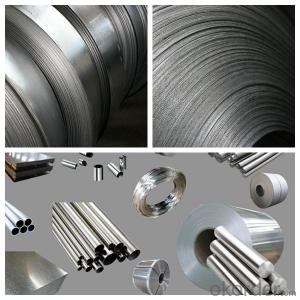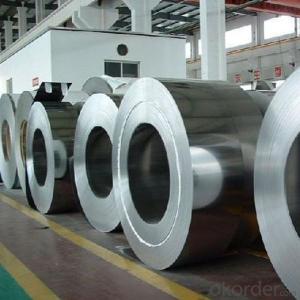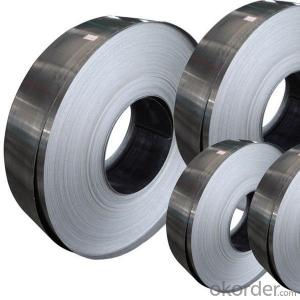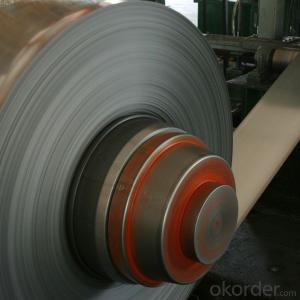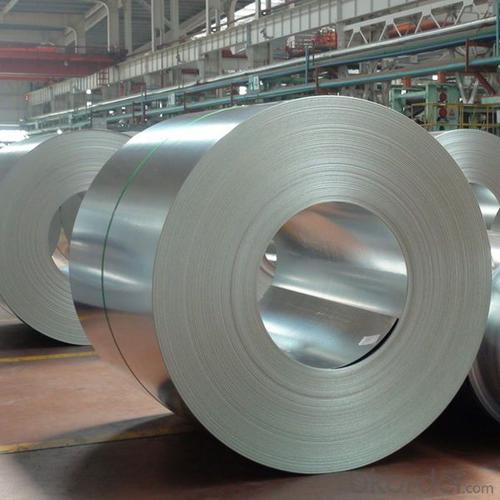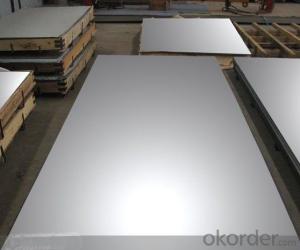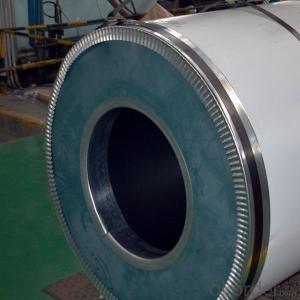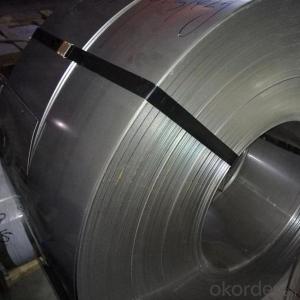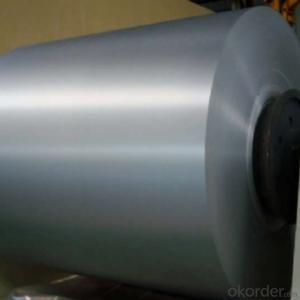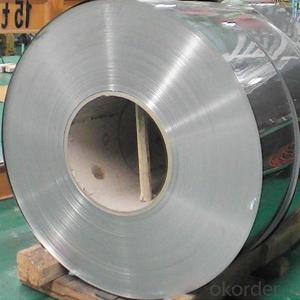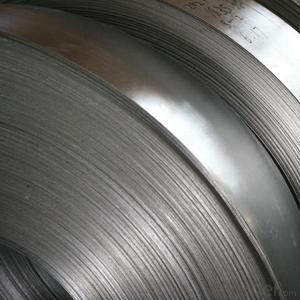Cold Rolled Stainless Steel Coils,Stainless Steel Sheets Grade 304L NO.2B Finish Made in China
- Loading Port:
- China main port
- Payment Terms:
- TT OR LC
- Min Order Qty:
- 18 m.t.
- Supply Capability:
- 1000000 m.t./month
OKorder Service Pledge
OKorder Financial Service
You Might Also Like
Specification
Products Description
Product | stainless steel coils/plates/sheets | ||
Discharge Port | Any Port, China | ||
Size | Coils | Cold Rolled: | Thickness0.3-8mm,Width:280-2100mm |
Hot Rolled : | Thickness3-14mm,Width:650-2100mm | ||
Plates | Thickness2-80mm,Width:1500-3000mm | ||
Coil Weight | About 20 Tons | ||
Grade | 201,202,304/304L/304H,316/316L/316H,321/H,310S,409/L,430 etc. | ||
Technique | Hot Rolled/Cold Rolled | ||
Finish | 2B, BA, 2D, No1, No2, No4,NO.8,SB etc | ||
Edge | Mill Edge / Slitting Edge | ||
Package | In bundles, or as customer's requirement | ||
Place of Origin | Made in China | ||
MOQ | 20 Tons | ||
Payment Terms | 100% LC at sight,or 30%TT in advance, balance against B/L copy | ||
Delivery Time | With 30-40 days after deposit | ||
Packaging & Delivery
Packaging Detail | Standard export packing or following customer's demand |
Delivery Time | Within 30-40 days after deposit or according to the order quantity |
Detail picture of Products:
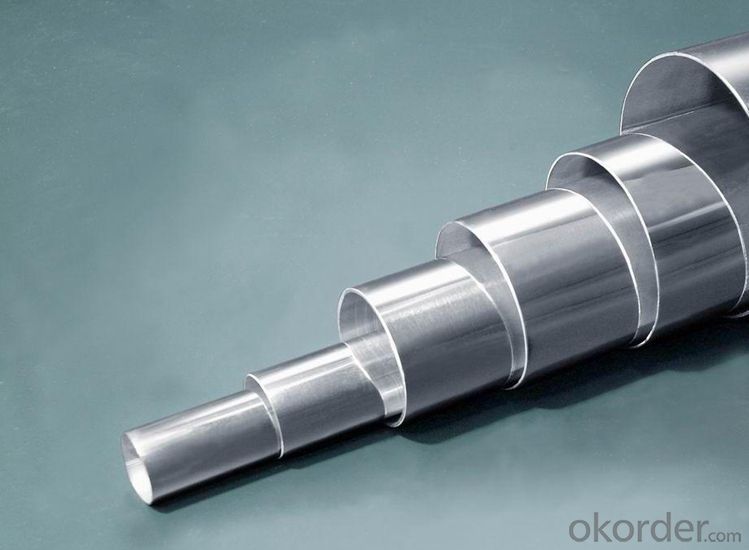

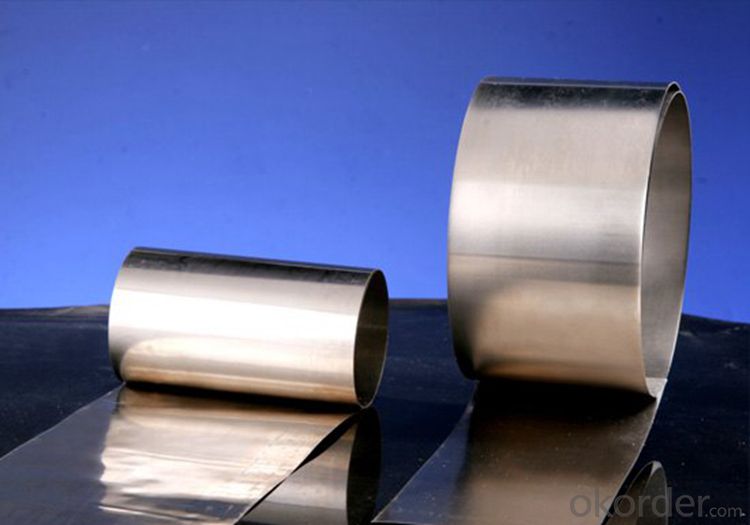
Application:
Finish | Definition | Application |
2B | Those finished, after cold rolling, by heat treatment, pickling or other equivalent treatment and lastly by cold rolling to given appropriate luster. | Medical equipment, Food industry, Construction material, Kitchen utensils. |
BA | Those processed with bright heat treatment after cold rolling. | Kitchen utensils, Electric equipment, Building construction. |
NO.3 | Those finished by polishing with No.100 to No.120 abrasives specified in JIS R6001. | Kitchen utensils, Building construction. |
NO.4 | Those finished by polishing with No.150 to No.180 abrasives specified in JIS R6001. | Kitchen utensils, Building construction, Medical equipment. |
NO.1 | The surface finished by heat treatment and pickling or processes corresponding there to after hot rolling. | Chemical tank, pipe. |


FAQ
Q: How long is the delivery time?
A: Normally 30-40 days, but mostly according to the specific requirements or the quantity
Q: Could you send me sample?
A: We can supply you with the sample for free, but the delivery charges will be covered by customers.
- Q: Are stainless steel sheets suitable for cleanroom applications?
- Indeed, stainless steel sheets prove to be apt for cleanroom applications. The reason lies in the fact that stainless steel boasts exceptional resistance against corrosion, a trait that holds immense importance in cleanroom environments where the utmost cleanliness and hygiene are paramount. Furthermore, stainless steel exhibits remarkable durability and effortless cleanability, rendering it an ideal choice for maintaining cleanliness standards in cleanrooms. Moreover, stainless steel possesses a non-porous nature, thereby preventing the absorption of contaminants and facilitating easy sanitization. Its resistance to chemicals further adds to its suitability for cleanroom applications that involve the use of potent disinfectants or cleaning agents. All in all, stainless steel sheets provide a dependable and hygienic surface for cleanroom applications.
- Q: Are stainless steel sheets suitable for desalination plants?
- Yes, stainless steel sheets are suitable for desalination plants. Stainless steel is highly corrosion resistant, making it ideal for applications in saltwater environments. It can withstand the harsh conditions of desalination plants, including exposure to saltwater, high temperatures, and pressure. Additionally, stainless steel is a durable and hygienic material, making it an excellent choice for desalination plant components such as heat exchangers, pipes, and tanks.
- Q: Are stainless steel sheets resistant to corrosion?
- Yes, stainless steel sheets are generally highly resistant to corrosion due to the presence of chromium in their composition, which forms a protective oxide layer on the surface. This oxide layer acts as a barrier, preventing the metal from being exposed to corrosive elements and ensuring its durability in various environments.
- Q: What are the different surface textures available for stainless steel sheets?
- There is a wide range of surface textures available for stainless steel sheets, catering to different aesthetic and functional needs. Let's explore some of the common options: 1. The No. 1 Finish, also known as mill finish, is the most prevalent surface texture. It is achieved through hot rolling and offers a smooth and reflective appearance. 2. The No. 2B Finish, achieved through cold rolling and annealing, has a slightly matte look with a non-reflective finish. 3. The No. 4 Finish, also called brushed or satin finish, is obtained through mechanical polishing. It showcases a brushed appearance with fine parallel lines, providing a textured and decorative touch. 4. The No. 8 Finish, also referred to as mirror or reflective finish, involves polishing the stainless steel sheet to a high shine. It boasts a glossy, mirror-like appearance that reflects light and adds a touch of luxury. 5. The Embossed Finish entails imprinting patterns or designs onto the stainless steel sheet. It can range from simple textures like diamond or linen patterns to more intricate designs, providing visual interest and enhanced grip for specific applications. 6. The Bead Blast Finish is achieved by blasting the stainless steel sheet with fine glass beads or other abrasives. It results in a uniform, matte finish with a slightly roughened texture, suitable for applications where a subdued appearance is desired. 7. The Etched Finish involves chemically etching the stainless steel sheet to create intricate patterns or designs. It offers a unique and artistic finish with detailed textures. These examples represent just a fraction of the diverse surface textures available for stainless steel sheets. Each texture possesses distinct characteristics, enabling a wide range of design possibilities across industries such as architecture, interior design, automotive, and more.
- Q: How many steps do I need for stamping the stainless steel plate?
- The shape of the product determines how many processes are required. Even the simplest needs 1 processes, and the complex may take 7-8 steps to complete.
- Q: What is the typical thickness range for stainless steel sheets?
- The typical thickness range for stainless steel sheets varies depending on the specific application and requirements. However, stainless steel sheets are commonly available in thicknesses ranging from 0.4mm to 6mm. Thinner sheets, such as those in the 0.4mm to 1mm range, are often used for decorative purposes or in applications that require flexibility. Thicker sheets, on the other hand, are commonly used in structural or industrial applications where strength and durability are crucial. It is important to note that these thickness ranges are not exhaustive, and customized stainless steel sheets can be manufactured to meet specific project requirements.
- Q: Can stainless steel sheets be used for water pipelines?
- Yes, stainless steel sheets can be used for water pipelines. Stainless steel is highly resistant to corrosion and has excellent strength, making it a suitable material for water pipelines that require durability and longevity. Additionally, stainless steel's smooth surface helps to maintain water flow efficiency and prevent contamination.
- Q: What are the benefits of using embossed stainless steel sheets?
- Using embossed stainless steel sheets has several advantages. Firstly, these sheets offer a heightened aesthetic appeal. The unique textures and visual interest created by the embossed patterns on the surface can transform any space, giving it a more modern and visually appealing look. This is applicable to both residential and commercial settings. In addition, embossed stainless steel sheets provide enhanced durability and strength. Stainless steel is already known for its resistance to corrosion, staining, and wear. The embossing process further reinforces the sheets, making them suitable for high traffic areas or places where damage or impact may occur. Moreover, embossed stainless steel sheets are incredibly versatile. They can be used in various applications, such as wall cladding, elevator panels, kitchen backsplashes, furniture, and architectural features. These sheets are easy to cut and shape, allowing for flexibility in design requirements. Furthermore, maintaining embossed stainless steel sheets is hassle-free. The smooth surface of the embossed patterns makes it easy to clean away dirt, grime, and fingerprints, ensuring a hygienic and spotless surface. This is particularly beneficial in areas that require high cleanliness standards, like kitchens or healthcare facilities. Lastly, embossed stainless steel sheets are environmentally friendly. Stainless steel is a highly sustainable material as it is 100% recyclable. The embossing process itself does not generate any waste or harmful byproducts, making these sheets an eco-friendly choice for those who want to reduce their carbon footprint and contribute to a greener environment. In conclusion, the advantages of using embossed stainless steel sheets include enhanced aesthetic appeal, increased durability and strength, versatility in applications, easy maintenance, and eco-friendliness. These sheets are an excellent option for individuals seeking a durable, stylish, and sustainable material for their projects.
- Q: What factors affect the cost of stainless steel sheets?
- There are several factors that can affect the cost of stainless steel sheets. These include the type and grade of stainless steel, the thickness and size of the sheets, the quantity being purchased, market demand and availability, production and labor costs, and any additional processing or finishing requirements.
- Q: Can stainless steel sheets be used for elevator cabins?
- Indeed, elevator cabins can utilize stainless steel sheets. The employment of stainless steel in elevator cabins is widespread owing to its resilience, pleasing aesthetics, and effortless upkeep. Its resistance to corrosion proves crucial in settings subjected to elevated humidity or chemical exposure. By utilizing stainless steel sheets, one can fashion elegant and contemporary elevator cabins that possess both functionality and visual allure. Furthermore, stainless steel's effortless cleaning and maintenance render it an exemplary selection for heavily frequented spaces like elevators.
Send your message to us
Cold Rolled Stainless Steel Coils,Stainless Steel Sheets Grade 304L NO.2B Finish Made in China
- Loading Port:
- China main port
- Payment Terms:
- TT OR LC
- Min Order Qty:
- 18 m.t.
- Supply Capability:
- 1000000 m.t./month
OKorder Service Pledge
OKorder Financial Service
Similar products
Hot products
Hot Searches
Related keywords

